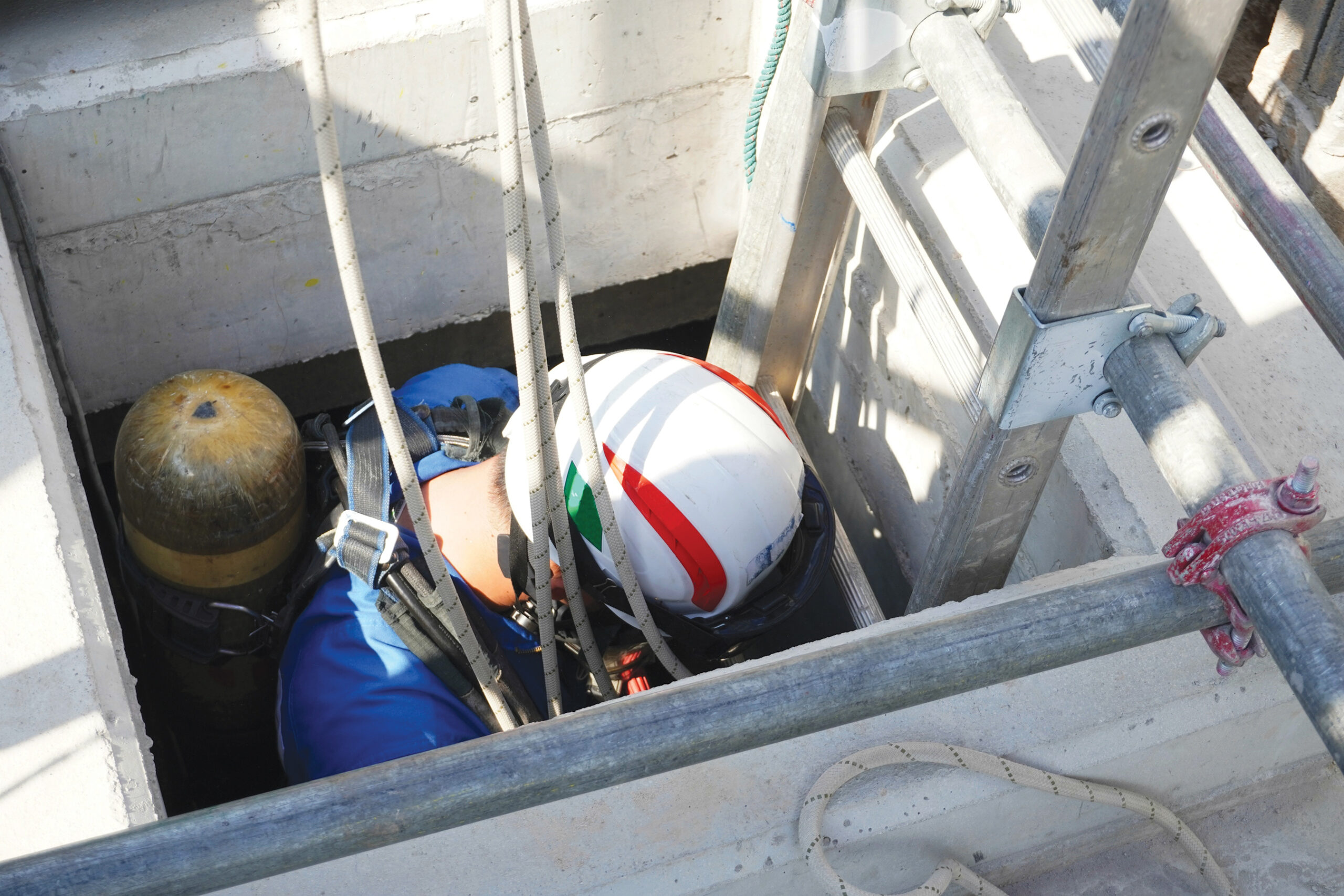
Confined spaces demand robust legislation from regulators, due diligence from employers
By Jack Burton

A worker descends into a confined space. Photo: Adobe Stock.
In December, a 54-year-old man was trapped underground and drowned while working on a ruptured pipe in Mississauga, Ont.
Incidents of workers being killed while in confined spaces remain all-too-common, with an average of 100 confined space fatalities happening across Canadian workplaces each year, according to WorkSafeBC.
Confined spaces exist across a variety of industries, such as construction, mining, and manufacturing, and come in numerous forms — including silos, pipelines, and furnaces. This range creates a number of distinct hazards, including suffocation, chemical volatility from pressure buildup, and fall risks or mobility issues.
Anu Dhar, a spokesperson for the Ontario Ministry of Labour, Immigration, Training and Skills Development, confirmed that while investigation of the incident in Mississauga, Ont., is ongoing and thus specifics cannot be disclosed, they are assessing numerous aspects of the workplace for compliance with the province’s Occupational Health and Safety Act.
Acts that protect workers
Provincial occupational health and safety legislation provides a number of regulations that employers must fulfill to ensure any confined spaces can be safely entered and operated within, no matter the nature of the space or the tasks being performed within it.
Among Ontario’s regulations, “one of them is that of course training needs to be provided for everybody who is going to be entering this space,” said Walter Yoo, senior associate lawyer at Monkhouse Law.
“The employer also has a duty to keep track of who’s been provided with that training, so that’s quite important in terms of a record keeping perspective, in order to ensure that the organization is compliant.”
In addition to training, “other legal requirements are that there needs to be adequate ventilation, regular testing for flammable materials and atmospheric pressure, along with proper means of communication to the outside,” Yoo said.
Integrating these elements is a requirement for all worksites to have an outlined safety plan for operating in these spaces, including a rescue plan should things go awry. Employees must be trained on proper protocols outlined in this plan before being allowed to enter or operate in any confined spaces present.
Making safety a part of the plan
Many provincial OHS acts require that a professional safety assessment be conducted to inform the safety plan for confined space workplaces.
This gives employers an understanding of the risks present and how to manage them, and in turn equips workers with an awareness of safely operating in the space.
“It’s really important to think of the conditions that might exist well before anybody goes into these types of spaces,” said Suzana Prpic, senior manager of prevention field services at WorksafeBC. “Hazard assessments are required, and workers must not enter until they are complete. A confined space entry program will describe how to safely do this, and must be developed by a qualified person.”
A professional assessment provides the data necessary for developing a safety blueprint tailor-made for the demands of the space: “The location, the configuration or the use of the space are all taken into consideration during the assessment, and then professionals look at what conditions might be present when work is being conducted in that space,” Prpic said.
Even where compliance exists, the elevated hazards of confined spaces can still challenge the safety of an environment. Prpic believes a common mistake employers make when it comes to ensuring safety in these spaces is insufficiently ensuring employees are fully aware of the dangers and perimeters of the confined space itself, and thus suggests additional training and ample signage.
“One issue is many workers really don’t realize that they’re entering into a confined space, so again, use proper signage that determines and communicates that hazard for every confined space,” she said. “Beyond that, it’s about communicating with workers so that they’re informed, educated, and engaged in terms of telling you if they find a new possible hazard in the space.”
Raising the standards
The heightened danger of confined spaces presents a level of threat to workplace safety that Andrew Mudge, executive-director of the Workers’ Health and Safety Centre, believes are not fully captured by existing occupational safety legislation.
“With limited routes of entry and exit, a lack of natural ventilation and sudden changes to atmospheric and physical conditions, confined spaces are among some of the most dangerous environments in which to work,” Mudge said. “Countless needless deaths in confined spaces tell us existing regulations are not enough on their own.”
Mudge spoke of the impact the organization has seen based on their successful advocacy toward Ontario’s mandated training standard for working at heights for construction workers as evidence that richer training expectations should extend to safety legislation for confined spaces as well.
“Prior to the province’s mandatory training standard for construction workers working at heights, adequate training was deemed acceptable for this hazardous work too.
We know better now,” Mudge said. “The evidence is in that our working at heights training standard saves lives, and I am confident similarly regulated confined space entry training would benefit workers as well.”
Jack Burton is a Toronto-based freelance writer who regularly contributes to OHS Canada.